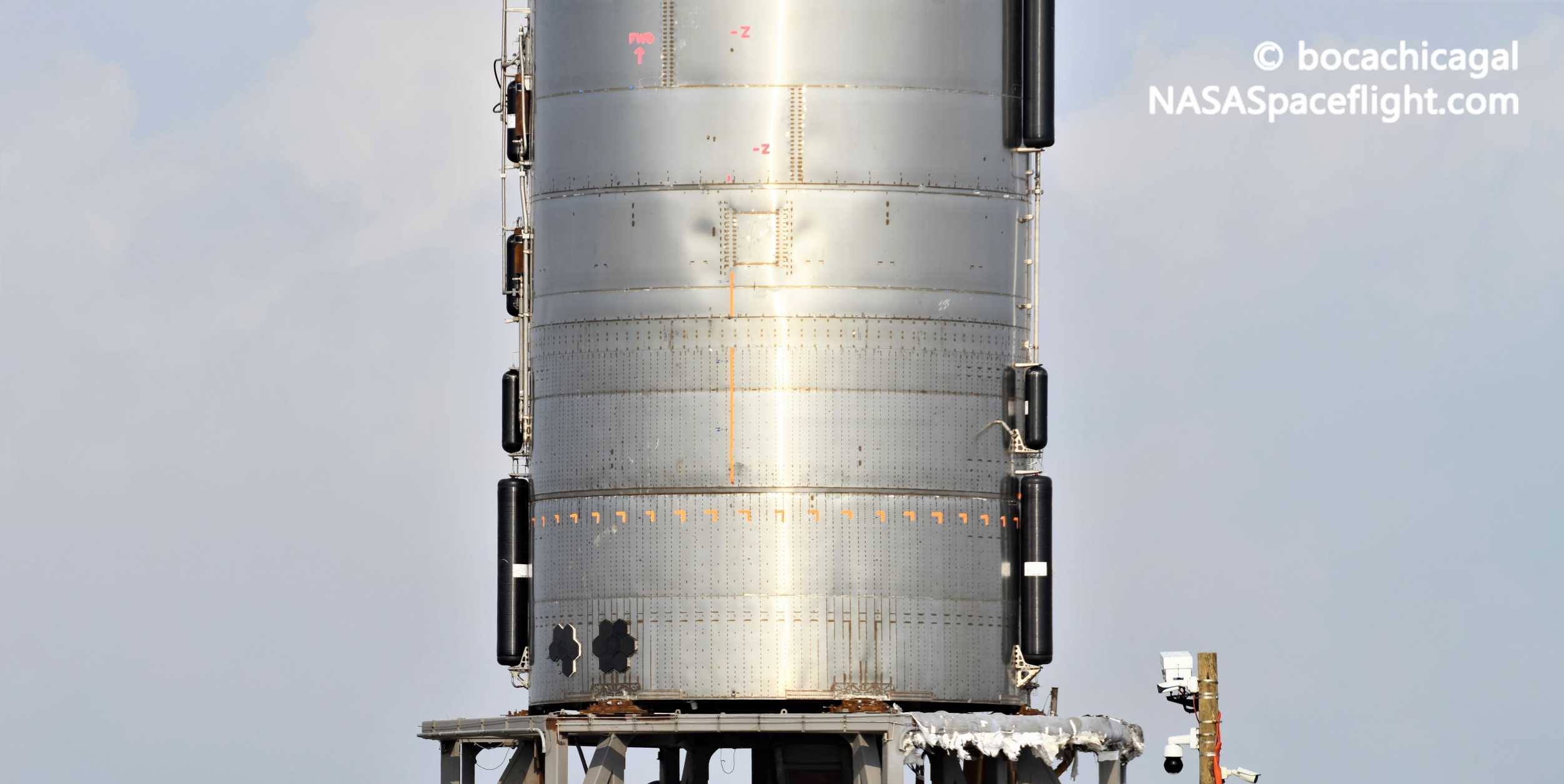

News
SpaceX’s first Starship hop on hold for historic Crew Dragon astronaut launch
SpaceX CEO Elon Musk says that he’s “redirected SpaceX’s priorities” to be almost entirely focused on Crew Dragon’s imminent astronaut launch debut, delaying Starship’s own hop test debut by at least a week or two as a result.
As of now, SpaceX’s Crew Dragon spacecraft remains on track to lift off with NASA astronauts for the first time ever at 4:33 pm EDT (20:33 UTC) on Wednesday, May 27th. Known as Demonstration Mission 2 (Demo-2), it will be Crew Dragon’s second orbital launch, third launch on a Falcon 9 rocket, and – most importantly – the United States’ first domestic astronaut launch in almost a decade. Although NASA has still managed to maintain a continuous presence at the International Space Station over the last nine years by paying Russia’s space agency more than $4 billion for roughly six dozen seats on Soyuz spacecraft, Demo-2 will be NASA’s first astronaut launch from the US since June 2011.
Built entirely by SpaceX with funds awarded by NASA, the company’s Crew Dragon spacecraft and Falcon 9 rocket will effectively singlehandedly return the United States’ ability to launch its own astronauts. Funded along with Boeing to ensure that NASA has two redundant spacecraft available, the latter company’s Starliner spacecraft has run into extensive delays after its orbital flight test (OFT) uncovered dangerously shoddy software and quality control. If Boeing is lucky, NASA might clear Starliner for its own crewed flight test (CFT, equivalent to Crew Dragon Demo-2) in the first half of 2021. As a result, a vast amount of pressure is on SpaceX’s shoulders to successfully launch astronauts for the first time ever just a few days from now.
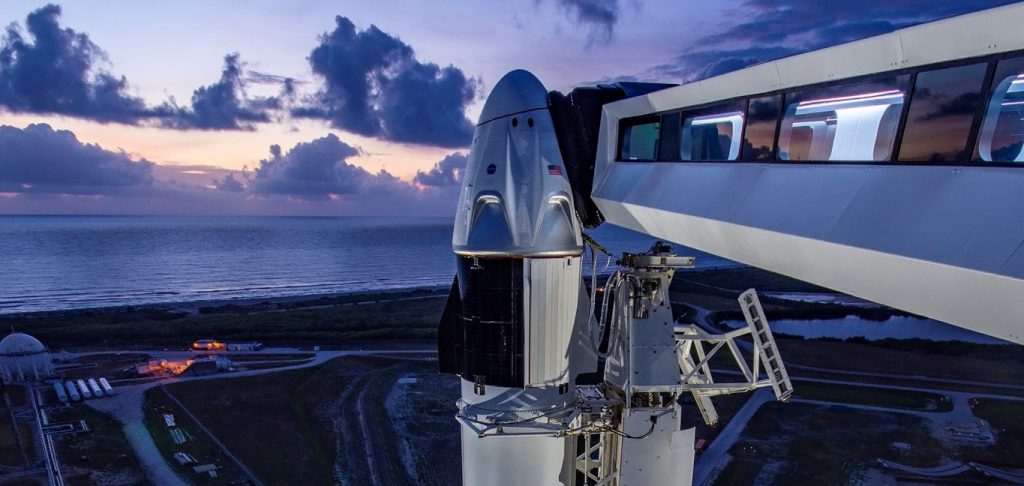
Of course, SpaceX is not unilaterally focused on Crew Dragon or its inaugural astronaut launch, even if it might be the single most important mission in the company’s 18 years of operation. For a company as large as SpaceX, it’s simply not practical or valuable to have every single employee working on one project, while having too many people on a given project would also likely be to its detriment. Nevertheless, Musk – in an interview with Aviation Week’s Irene Klotz – stated that he’d redirected SpaceX’s priorities to be “very focused” on Demo-2.
Aside from Crew Dragon Demo-2, SpaceX operates a Starlink satellite factory near Seattle, builds and assembles all aspects of Falcon rockets and Dragon spacecraft at its Hawthorne, CA headquarters, tests those rockets and spacecraft in McGregor, Texas development facilities, and builds, tests, and flies Starship prototypes in Boca Chica, Texas. (The company has many, many other operations around the US but the list above at least covers the bulk of the company’s workforce.)
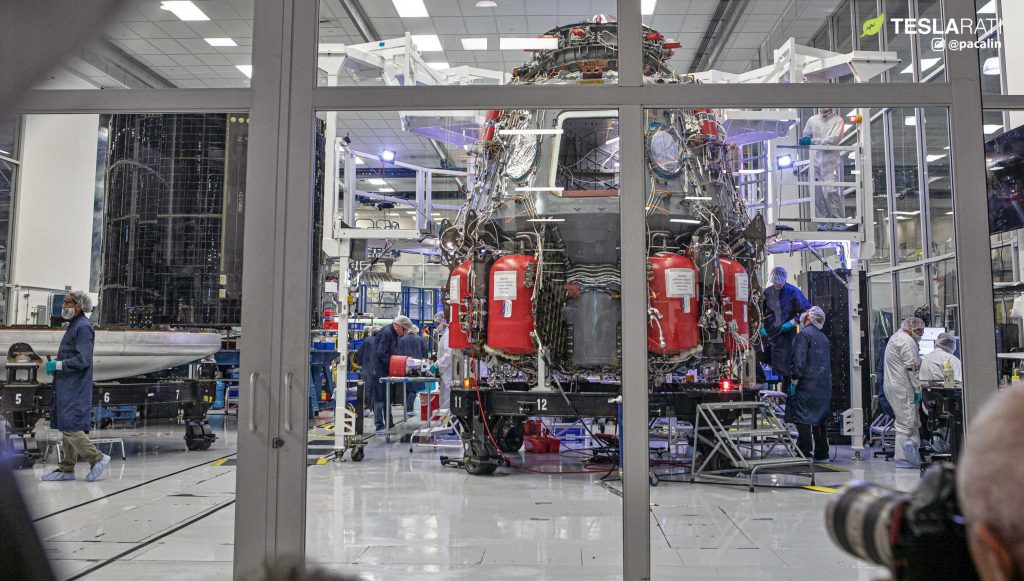
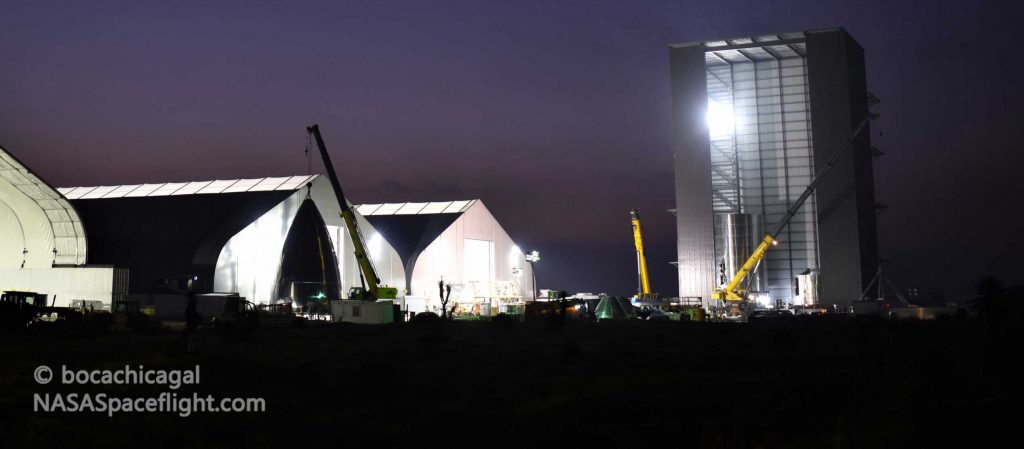
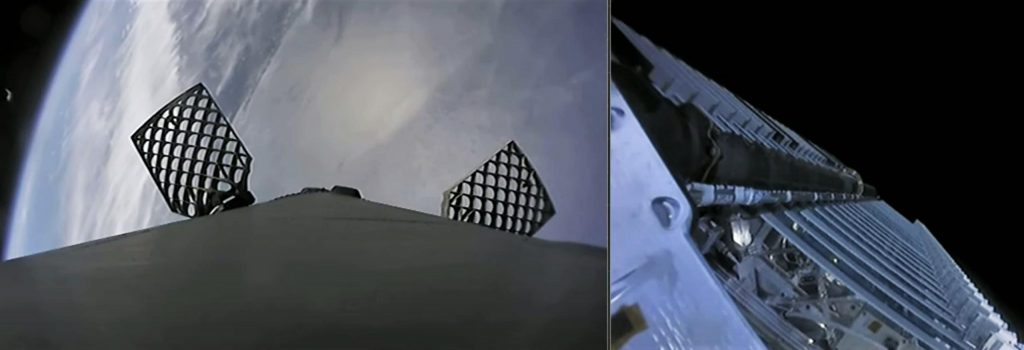
Those myriad programs can’t simply freeze operations without catastrophically impacting future plans and schedules, meaning that Musk’s “redirection” is likely more an effort to keep the public focus on Crew Dragon, versus actually retasking thousands of employees to do work that probably doesn’t (but might) exist. Still, the company has definitely taken some real steps to stay laser-focused on Crew Dragon where practical.
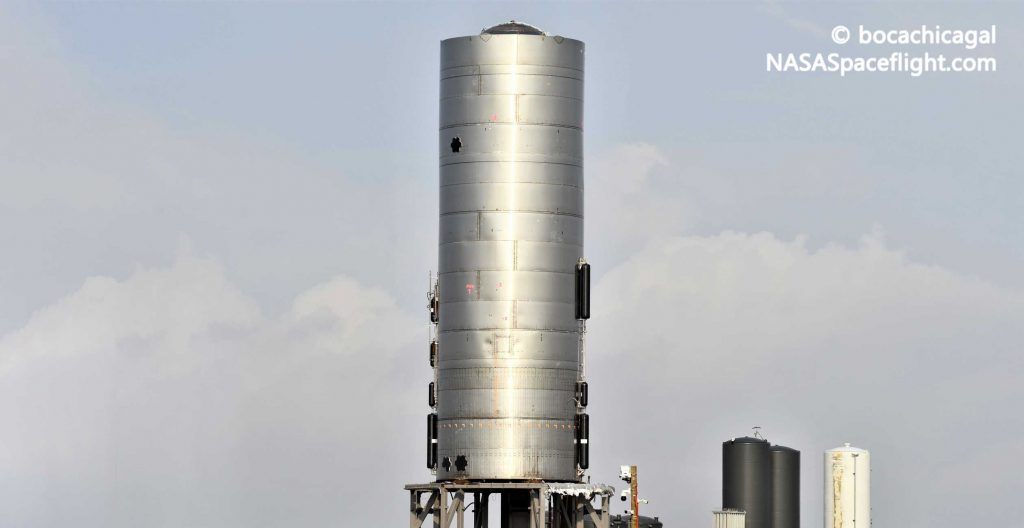
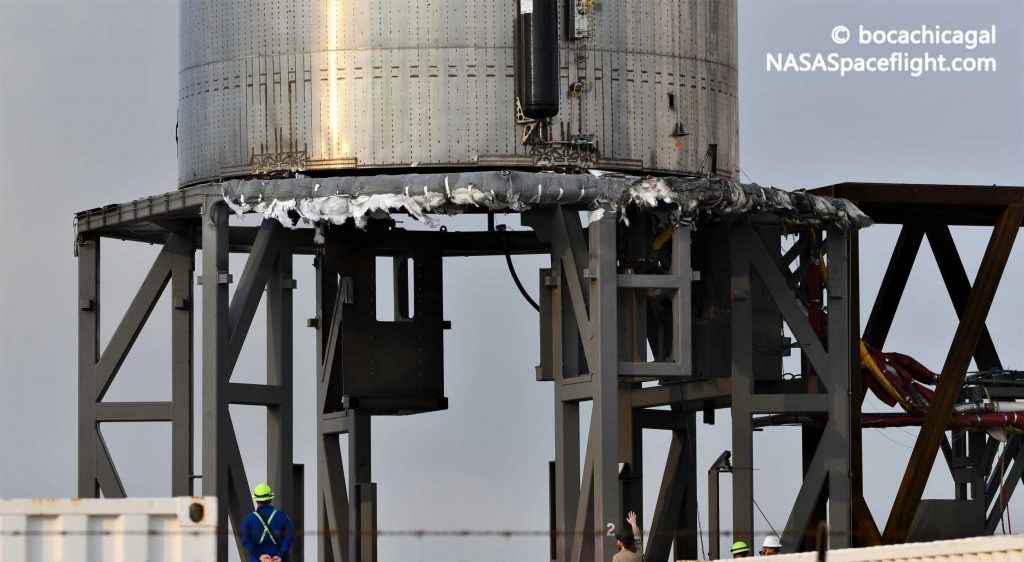
Most notably, SpaceX has already indefinitely delayed its eight launch of 60 Starlink communications satellites, previously scheduled to lift off no earlier than (NET) May 19th. Now, Musk says that SpaceX has also decided to delay the first flight test of a full-scale Starship prototype until after Demo-2 successfully launches, implying that the company could have potentially launched Starship SN4 for the first time later this week.
In fact, SpaceX has three Starlink launches – including the mission delayed from May – now scheduled in June 2020, as well as Falcon 9’s second US military GPS III satellite launch at the end of the month. It’s unclear whether SpaceX will retest Starship SN4 after its off-nominal May 19th Raptor test or move directly into flight test operations, but its next South Texas test period has windows on May 28th, May 29th, and June 1st. In short, the next ~5 weeks are set to be a wild ride for SpaceX, to put it mildly.
Check out Teslarati’s Marketplace! We offer Tesla accessories, including for the Tesla Cybertruck and Tesla Model 3.
News
These Tesla, X, and xAI engineers were just poached by OpenAI
The news is the latest in an ongoing feud between Elon Musk and the Sam Altman-run firm OpenAI.

OpenAI, the xAI competitor for which Elon Musk previously served as a boardmember and helped to co-found, has reportedly poached high-level engineers from Tesla, along with others from xAI, X, and still others.
On Tuesday, Wired reported that OpenAI hired four high-level engineers from Tesla, xAI, and X, as seen in an internal Slack message sent by co-founder Greg Brockman. The engineers include Tesla Vice President of Software Engineering David Lau, X and xAI’s head of infrastructure engineering Uday Ruddarraju, and fellow xAI infrastructure engineer Mike Dalton. The hiring spree also included Angela Fan, an AI researcher from Meta.
“We’re excited to welcome these new members to our scaling team,” said Hannah Wong, an OpenAI spokesperson. “Our approach is to continue building and bringing together world-class infrastructure, research, and product teams to accelerate our mission and deliver the benefits of AI to hundreds of millions of people.”
Lau has been in his position as Tesla’s VP of Software Engineering since 2017, after previously working for the company’s firmware, platforms, and system integration divisions.
“It has become incredibly clear to me that accelerating progress towards safe, well-aligned artificial general intelligence is the most rewarding mission I could imagine for the next chapter of my career,” Lau said in a statement to Wired.
🚨Optimistic projections point to xAI possibly attaining profitability by 2027, according to Bloomberg's sources.
If accurate, this would be quite a feat for xAI. OpenAI, its biggest rival, is still looking at 2029 as the year it could become cash flow positive.💰 https://t.co/pE5Z9daez8
— TESLARATI (@Teslarati) June 18, 2025
READ MORE ON OPENAI: Elon Musk’s OpenAI lawsuit clears hurdle as trial looms
At xAI, Ruddarraju and Dalton both played a large role in developing the Colossus supercomputer, which is comprised of over 200,000 GPUs. One of the major ongoing projects at OpenAI is the company’s Stargate program,
“Infrastructure is where research meets reality, and OpenAI has already demonstrated this successfully,” Ruddarraju told Wired in another statement. “Stargate, in particular, is an infrastructure moonshot that perfectly matches the ambitious, systems-level challenges I love taking on.”
Elon Musk is currently in the process of suing OpenAI for shifting toward a for-profit model, as well as for accepting an investment of billions of dollars from Microsoft. OpenAI retaliated with a counterlawsuit, in which it alleges that Musk is interfering with the company’s business and engaging in unfair competition practices.
Elon Musk confirms Grok 4 launch on July 9 with livestream event
News
SpaceX share sale expected to back $400 billion valuation
The new SpaceX valuation would represent yet another record-high as far as privately-held companies in the U.S. go.

A new report this week suggests that Elon Musk-led rocket company SpaceX is considering an insider share sale that would value the company at $400 billion.
SpaceX is set to launch a primary fundraising round and sell a small number of new shares to investors, according to the report from Bloomberg, which cited people familiar with the matter who asked to remain anonymous due to the information not yet being public. Additionally, the company would sell shares from employees and early investors in a follow-up round, while the primary round would determine the price for the secondary round.
The valuation would represent the largest in history from a privately-owned company in the U.S., surpassing SpaceX’s previous record of $350 billion after a share buyback in December. Rivaling company valuations include ByteDance, the parent company of TikTok, as well as OpenAI.
Bloomberg went on to say that a SpaceX representative didn’t respond to a request for comment at the time of publishing. The publication also notes that the details of such a deal could still change, especially depending on interest from the insider sellers and share buyers.
Axiom’s Ax-4 astronauts arriving to the ISS! https://t.co/WQtTODaYfj
— TESLARATI (@Teslarati) June 26, 2025
READ MORE ON SPACEX: SpaceX to decommission Dragon spacecraft in response to Pres. Trump war of words with Elon Musk
SpaceX’s valuation comes from a few different key factors, especially including the continued expansion of the company’s Starlink satellite internet company. According to the report, Starlink accounts for over half of the company’s yearly revenue. Meanwhile, the company produced its 10 millionth Starlink kit last month.
The company also continues to develop its Starship reusable rocket program, despite the company experiencing an explosion of the rocket on the test stand in Texas last month.
The company has also launched payloads for a number of companies and government contracts. In recent weeks, SpaceX launched Axiom’s Ax-4 mission, sending four astronauts to the International Space Station (ISS) for a 14-day stay to work on around 60 scientific experiments. The mission was launched using the SpaceX Falcon 9 rocket and a new Crew Dragon capsule, while the research is expected to span a range of fields including biology, material and physical sciences, and demonstrations of specialized technology.
News
Tesla Giga Texas continues to pile up with Cybercab castings
Tesla sure is gathering a lot of Cybercab components around the Giga Texas complex.

Tesla may be extremely tight-lipped about the new affordable models that it was expected to start producing in the first half of the year, but the company sure is gathering a lot of Cybercab castings around the Giga Texas complex. This is, at least, as per recent images taken of the facility.
Cybercab castings galore
As per longtime drone operator Joe Tegtmeyer, who has been chronicling the developments around the Giga Texas complex for several years now, the electric vehicle maker seems to be gathering hundreds of Cybercab castings around the factory.
Based on observations from industry watchers, the drone operator appears to have captured images of about 180 front and 180 rear Cybercab castings in his recent photos.
Considering the number of castings that were spotted around Giga Texas, it would appear that Tesla may indeed be preparing for the vehicle’s start of trial production sometime later this year. Interestingly enough, large numbers of Cybercab castings have been spotted around the Giga Texas complex in the past few months.
Cybercab production
The Cybercab is expected to be Tesla’s first vehicle that will adopt the company’s “unboxed” process. As per Tesla’s previous update letters, volume production of the Cybercab should start in 2026. So far, prototypes of the Cybercab have been spotted testing around Giga Texas, and expectations are high that the vehicle’s initial trial production should start this year.
With the start of Tesla’s dedicated Robotaxi service around Austin, it might only be a matter of time before the Cybercab starts being tested on public roads as well. When this happens, it would be very difficult to deny the fact that Tesla really does have a safe, working autonomous driving system, and it has the perfect vehicle for it, too.
-

 Elon Musk1 week ago
Elon Musk1 week agoTesla investors will be shocked by Jim Cramer’s latest assessment
-

 News2 weeks ago
News2 weeks agoTesla Robotaxi’s biggest challenge seems to be this one thing
-

 Elon Musk1 day ago
Elon Musk1 day agoElon Musk confirms Grok 4 launch on July 9 with livestream event
-

 News2 weeks ago
News2 weeks agoWatch the first true Tesla Robotaxi intervention by safety monitor
-

 News5 days ago
News5 days agoTesla Model 3 ranks as the safest new car in Europe for 2025, per Euro NCAP tests
-

 Elon Musk2 weeks ago
Elon Musk2 weeks agoA Tesla just delivered itself to a customer autonomously, Elon Musk confirms
-

 Elon Musk2 weeks ago
Elon Musk2 weeks agoxAI welcomes Memphis pollution results, environmental groups push back
-

 Elon Musk2 weeks ago
Elon Musk2 weeks agoElon Musk confirms Tesla Optimus V3 already uses Grok voice AI















